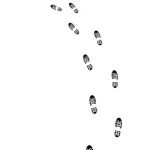
When you have an ongoing struggle in a personal relationship, the problem behavior is usually the tip of the iceberg.
There is something beneath the waterline that is much deeper and is the real problem that needs to be addressed before the behavior that is above the waterline will lead to meaningful change in that person.
In the same way, there is a current problem in nursing education that represents the tip of the iceberg and what is above the waterline.
In the article published in 2017, A Crisis in Competency: The Strategic and Ethical Imperative to Assessing New Graduate Nurses’ Clinical Reasoning and the subject of last week’s blog, only 23% of new graduate nurses; all who passed the NCLEX® met entry-level expectations of thinking like a nurse using the skill of clinical reasoning to make a correct clinical judgment.
This finding is only the tip of the iceberg and not the real problem. WHY this finding is present needs to be identified before meaningful change can take place.
Lessons from the Titanic
The tragedy of the Titanic illustrates that it is not what you see of the iceberg, but what is below the waterline that is most important.
In the opening pages of this must-read article for every nurse educator, numerous problems that persist in nursing education were identified and addressed.
Before meaningful change can take place, these current problems beneath the waterline first need to be recognized and remedied as the needed FIRST step to better prepare students for practice and bridge the current academic-practice gap.
As I carefully reread this article again, I was struck that some of the underlying problems are outside the direct control of nursing education, but many are fully within our control.
As you review what follows, keep in mind the wisdom of the Serenity prayer which focuses on changing the things that you can while letting go of those things that you cannot and put your energy into what is fully within your control!
Patient Impact
 Even though Dr. Patricia Benner and her coauthors who wrote Educating Nurses: A Call for Radical Transformation in 2010 sounded the alarm to radically transform nursing education then, things have gotten worse.
Even though Dr. Patricia Benner and her coauthors who wrote Educating Nurses: A Call for Radical Transformation in 2010 sounded the alarm to radically transform nursing education then, things have gotten worse.
This not only adversely impacts student learning, but the lives of the patient’s that these graduate nurses will be caring for. Practice preparation and practice readiness is literally a matter of life-and-death.
Errors in the hospital setting that include nursing failure to rescue are currently the 3rd leading cause of death resulting in over 250,000 deaths in the United States alone (Makary & Daniel, 2016).
What Education CAN’T Control
The following are factors that this article identified that impact practice readiness but OUTSIDE the direct control of nursing education:
- Increasing acuity and decreasing length of stay of patients in hospitals
- Rapid pace of change, speed of innovation, and technological advances in healthcare
- Nursing programs that struggle to respond to states cutbacks, aging faculty, and competition for clinical sites with a decrease in available clinical hours.
What Education CAN Control
The following are factors that are within the direct control of nursing education that prevents students from being practice-ready:
1. Emphasis on NCLEX® success
Though it should be obvious, preparing students to pass a multiple choice test is not the point of all that you do as an educator. It is doing what is needed to prepare them for practice. If you emphasize active learning and clinical reasoning, it is a win-win and you can accomplish both of these needed objectives.
2. Emphasis on performance/evaluation metrics that make it all about the NCLEX®
There is currently an entire culture and industry that has sprung up in nursing education (HESI, ATI, Kaplan, etc.) that was not there when I graduated and passed the NCLEX® in 1983.
These programs are pricey and emphasize assessment measures that must be met for both admission, throughout the program, and to pass and sit for the NCLEX® in some programs.
The problem…these tools do not effectively measure students UNDERSTANDING of safe patient care or ability to APPLY knowledge in practice settings (Benner, 2015).
3. Graduates who are unable to think like a nurse
Though critical thinking and clinical judgment are required skills that must be possessed, new graduate nurses do not have the ability or confidence to apply this learning to practice (Benner, Sutphen, Leonard, & Day, 2010).
This includes students who memorize content but are not able to apply and use the knowledge they have been taught.
4. Failure to fail students who should not progress
Even though students do not demonstrate satisfactory progression in the nursing program, some are allowed to continue and still enter practice (Docherty & Dieckmann, 2015).
What ethos dominates in your academic culture? “Student success” at almost any cost or “patient safety” and failure to progress?
5. Infobesity
There is simply too much information and a current explosion of information with nursing knowledge doubling every six years. The amount of information exceeds the ability of students to assimilate it (Porter-O’Grady & Malloch, 2011).
Textbooks are part of the problem. In order to be comprehensive, they have grown ever larger and unchecked in size. Textbooks emphasize knowledge acquisition but not the more important use and application of this knowledge to practice.
As a result of TMI, students are unable to use knowledge and act on what they know because they do not know it deeply enough to apply it to the bedside where it matters most.
ACTION Step
Download the full article of Crisis in Competency to see for yourself the current problem but more importantly get a vision for how to be a part of the needed change and what that will require in 2018 For both you, your team and your program as a whole.
This article is a wakeup call to nursing education and time for faculty to recognize the scope and depth of the current problem.
Review this list, get a vision for what is directly in your control and make it a priority to address one or two problems that you can address and do whatever is needed so student learning is strengthened this semester!
Do Something!
Florence Nightingale collected almost 1000 pages of statistics during her service in the Crimean war that detailed the deadly consequences of poor sanitation on the mortality rates of wounded soldiers. What if Nightingale did nothing with this data and clung to the ways of the past that nursing had always been done?
Nothing would have changed, nursing would still be in the dark ages, and patients would needlessly die due to preventable problems.
Nursing education is at a similar crossroads and some faculty continue to resist needed change. Nurse educators need to recognize what is at stake (patient lives) and embrace educational best practice that requires doing things differently or choose a different line of work.
Doing nothing is no longer an option.
Nightingale recognized the importance of action and doing what was needed to transform the nursing profession in her generation.
Nightingale wrote after the war:
“I think one’s feelings waste themselves in words; they ought all to be distilled into actions which bring results…data is passive; only people can ACT.”
May we have the courage to ACT and do what is needed to strengthen and transform nursing education as Nightingale did in her generation.
In the weeks ahead I will share practical steps and strategies to help any motivated educator implement and the needed change!
Relevant Past Blogs
- How to Close the Education-Practice Gap
- Why Educators Must Emphasize Preparing Students for Practice, Not the NCLEX®
- How to Effectively Teach Clinical Reasoning so Students can Think More Like a Nurse
Comment Question:
What have you done differently to improve practice readiness of your students?
Comment below and let the conversation begin!
References
- Benner, P., Sutphen, M., Leonard, V., & Day, L. (2010). Educating nurses: A call for radical transformation. San Francisco, CA: Jossey-Bass.
- Benner, P. (2015). Can students be test ready, practice ready and be prepared for the future? Retrieved from www.educatingnurses.com/etc
- Docherty, A. & Dieckmann, N. (2015). Is there evidence of failing to fail in our schools of nursing? Nursing Education Perspectives, 36(4), 226-231.
- Kavanagh, J. & Szweda, C. (2017). A crisis in competency: The strategic and ethical imperative to assessing new graduate nurses’ clinical reasoning. Nursing Education Perspectives, 38(2), 57-61.
- Makary, M.A. & Daniel, M. (2016). Medical error-The third leading cause of death in the US, BMJ, 353.
- Porter-O’Grady, T. & Malloch, K. (2011). Quantum leadership: Advancing innovation, transforming healthcare (3rd ed.). Sudbury, MA: Jones & Bartlett Learning.
Keith Rischer – PhD, RN, CEN
As a nurse with over 35 years of experience who remained in practice as an educator, I’ve witnessed the gap between how nursing is taught and how it is practiced, and I decided to do something about it! Read more…
The Ultimate Solution to Develop Clinical Judgment Skills
KeithRN’s Think Like a Nurse Membership
Access exclusive active learning resources for faculty and students, including KeithRN Case Studies, making it your go-to resource.




